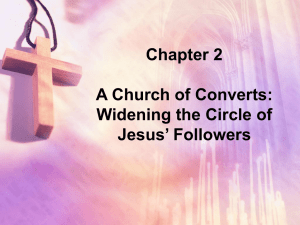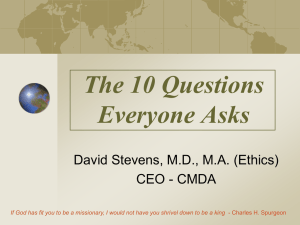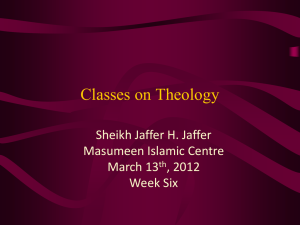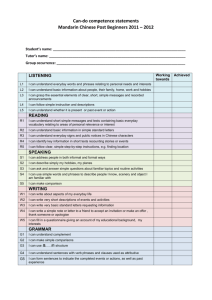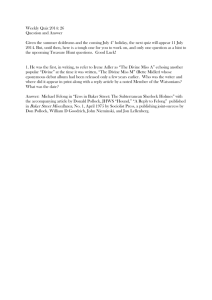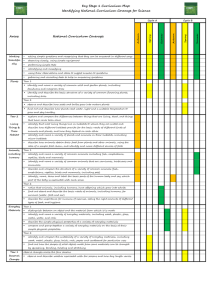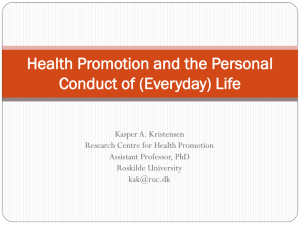Semitic Religious Traditions
advertisement
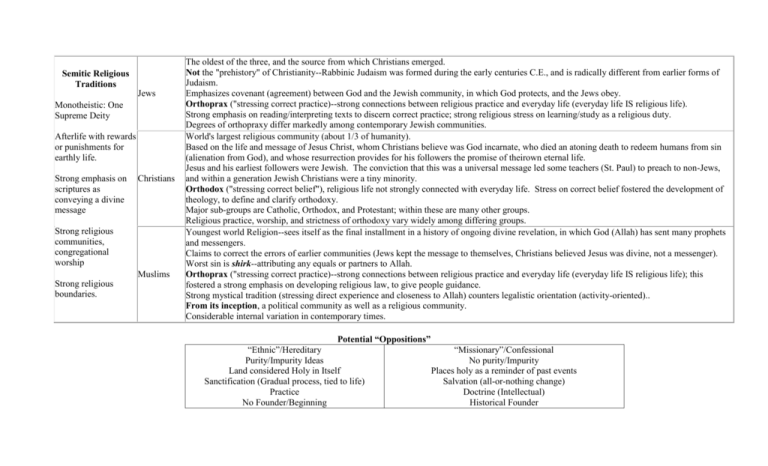
Semitic Religious Traditions Jews Monotheistic: One Supreme Deity Afterlife with rewards or punishments for earthly life. Strong emphasis on scriptures as conveying a divine message Christians Strong religious communities, congregational worship Muslims Strong religious boundaries. The oldest of the three, and the source from which Christians emerged. Not the "prehistory" of Christianity--Rabbinic Judaism was formed during the early centuries C.E., and is radically different from earlier forms of Judaism. Emphasizes covenant (agreement) between God and the Jewish community, in which God protects, and the Jews obey. Orthoprax ("stressing correct practice)--strong connections between religious practice and everyday life (everyday life IS religious life). Strong emphasis on reading/interpreting texts to discern correct practice; strong religious stress on learning/study as a religious duty. Degrees of orthopraxy differ markedly among contemporary Jewish communities. World's largest religious community (about 1/3 of humanity). Based on the life and message of Jesus Christ, whom Christians believe was God incarnate, who died an atoning death to redeem humans from sin (alienation from God), and whose resurrection provides for his followers the promise of theirown eternal life. Jesus and his earliest followers were Jewish. The conviction that this was a universal message led some teachers (St. Paul) to preach to non-Jews, and within a generation Jewish Christians were a tiny minority. Orthodox ("stressing correct belief"), religious life not strongly connected with everyday life. Stress on correct belief fostered the development of theology, to define and clarify orthodoxy. Major sub-groups are Catholic, Orthodox, and Protestant; within these are many other groups. Religious practice, worship, and strictness of orthodoxy vary widely among differing groups. Youngest world Religion--sees itself as the final installment in a history of ongoing divine revelation, in which God (Allah) has sent many prophets and messengers. Claims to correct the errors of earlier communities (Jews kept the message to themselves, Christians believed Jesus was divine, not a messenger). Worst sin is shirk--attributing any equals or partners to Allah. Orthoprax ("stressing correct practice)--strong connections between religious practice and everyday life (everyday life IS religious life); this fostered a strong emphasis on developing religious law, to give people guidance. Strong mystical tradition (stressing direct experience and closeness to Allah) counters legalistic orientation (activity-oriented).. From its inception, a political community as well as a religious community. Considerable internal variation in contemporary times. Potential “Oppositions” “Ethnic”/Hereditary “Missionary”/Confessional Purity/Impurity Ideas No purity/Impurity Land considered Holy in Itself Places holy as a reminder of past events Sanctification (Gradual process, tied to life) Salvation (all-or-nothing change) Practice Doctrine (Intellectual) No Founder/Beginning Historical Founder Hardest to categorize: No human founder, single supreme deity, centralized authority, definitive scripture, or code of beliefs. Ancient religious roots, but in continuous transformation since then Religious belief and practice has sharp local, regional, and sectarian variation. Generally accepted belief in reincarnation, which is determined by karma. Far greater diversity (far Hindus Orthoprax: ("stressing correct practice)--strong connections between religious assumptions, the traditional social system, and everyday life; wider cultural this stress spurred the development of social guidelines, particularly the notion of duty (dharma). influences) No orthodoxy--as long as people fulfill their social obligations, they could believe (or not believe) in whatever they want. Basic goal is to seek and experience the Divine. Paths/practices are many, because of people's differing capacities/inclinations, and people May be mono-, poly, should do what is best for them (whether intellectual, devotional, mystical, or active). non-, or a-theistic First Great Missionary Religion, first Great non-ethnic Religion Began with the life and teachings of a single person, the Buddha ("Enlightened One"), who first taught his followers why human beings are May stress unhappy, and then an 8-step self-transformational program to transcend this, by attaining a condition called Nirvana.. reincarnation, or may Buddhists (as Hindus) generally accept the reality of karma and rebirth. deny any afterlife. Buddhists Earliest teachings stress each person's responsibility for his/her own spiritual development. The foundation is basic morality, which everyone should uphold, one cultivates higher levels only when ready (progress is sometimes slow). The Buddha is a respected human teacher Scriptures important for Later teaching (the Mahayana) stresses the bodhisattva--who voluntarily postpones nirvana to lead others to enlightenment, out of content or message, not compassion for their suffering. The Buddhas (multiple) take on superhuman capacities. divine origin. Different Asian cultural settings have prompted strong regional variations. Two great indigenous traditions--Confucian and Daoist, to which was added missionary Buddhism. All of these had a profound effect on the Worship and Practice culture. more individual than No strong demands for exclusive religious allegiance--people can be Confucian, Daoist, and Buddhist simultaneously (one or another may be congregational. more appropriate for any particular situation). Chinese religion tends to be pragmatic, centered on living a "good" life (however conceived) here and now on this earth. Community identities Chinese Confucians stress social order, hierarchy, loyalty, and lifelong self-development. Focuses on building character through and religious boundaries learning/internalizing past models. Highly conscious, highly intentional, highly rational. more fluid Daoists stress awareness of the Dao, a transcendent harmony in the universe, and of living harmoniously with this. Destresses conscious thought/rationalism for intuition and awareness. Asian Religious Traditions

